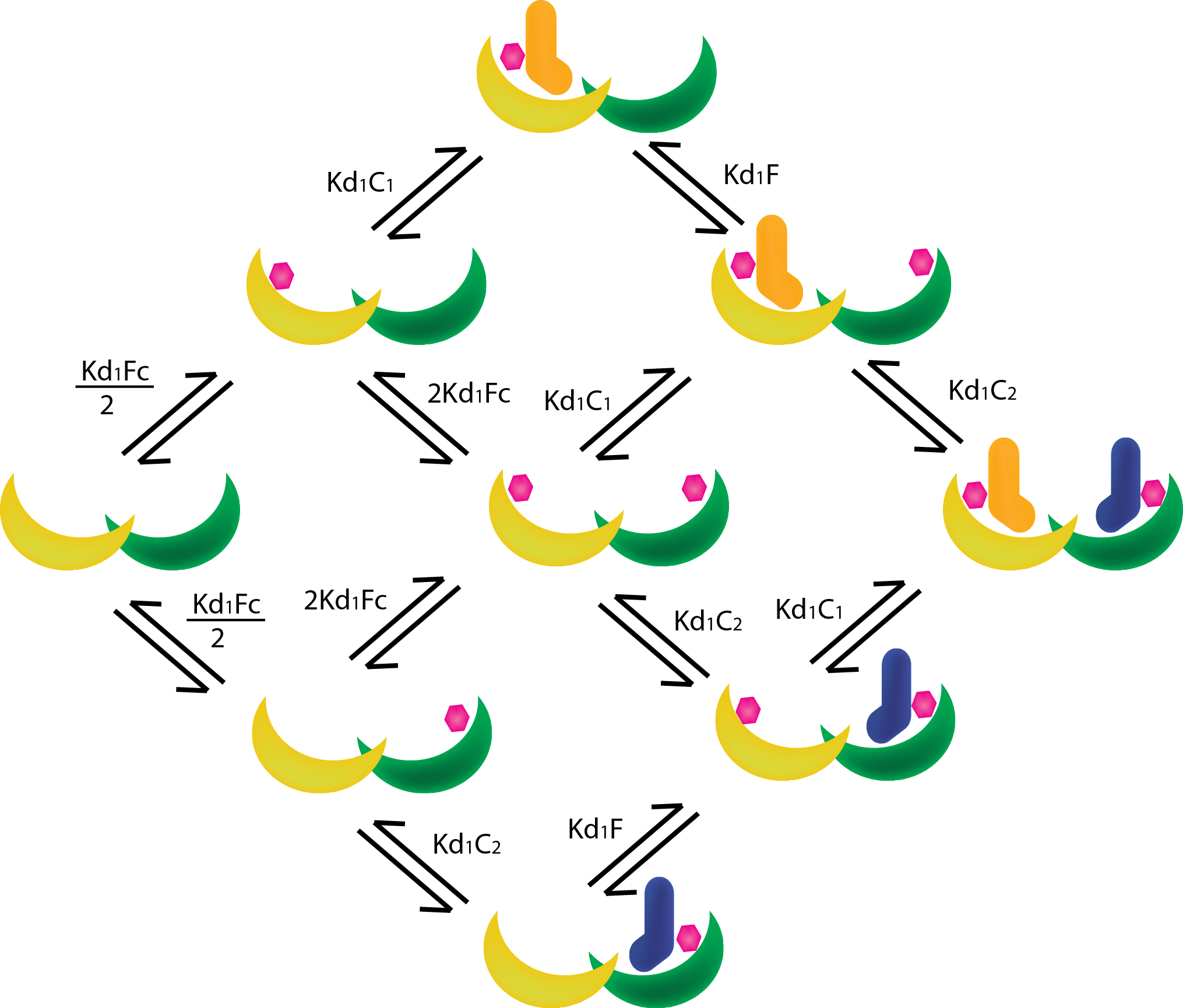| Line 98: | Line 98: | ||
<p> | <p> | ||
In the emerging field of synthetic biology, many new innovations arise. To use them as efficient and safe as possible, regulation is the key. Therefore, iGEM TU Eindhoven is developing new kinds of scaffold proteins, based on 14-3-3 proteins. These scaffold proteins have a wide range of applications in nature and utilizing this feature they are used to regulate systems in synthetic biology. | In the emerging field of synthetic biology, many new innovations arise. To use them as efficient and safe as possible, regulation is the key. Therefore, iGEM TU Eindhoven is developing new kinds of scaffold proteins, based on 14-3-3 proteins. These scaffold proteins have a wide range of applications in nature and utilizing this feature they are used to regulate systems in synthetic biology. | ||
| − | |||
| − | |||
</p> | </p> | ||
</div> | </div> | ||
Revision as of 17:37, 8 September 2016

-
The Universal Scaffold

In the emerging field of synthetic biology, many new innovations arise. To use them as efficient and safe as possible, regulation is the key. Therefore, iGEM TU Eindhoven is developing new kinds of scaffold proteins, based on 14-3-3 proteins. These scaffold proteins have a wide range of applications in nature and utilizing this feature they are used to regulate systems in synthetic biology.
Hier nog meer tekst met ergens een linkje of een soort button knop om door te gaan naar die pagina. niet zo'n lelijke zoals bij de vorige pagina.. beetje mooier, zal er nog is naar kijken
-
The Team
The iGEM 2016 team of the Eindhoven University of Technology consists of 9 enthusiastic undergraduates of both Biomedical Engineering and Medical Sciences and Technology. Our members work very hard both inside and outside the lab, and have a great time working on our project and learn a lot thanks to iGEM.
-
The Model

In order to create our heterodimeric scaffold it is essential to find suitable mutations to create a mutated T14-3-3/CT52 pair that is orthogonal to the wildtype. To find these mutations, The Rosetta software and a self-written protocol was used,
To determine the yet unknown properties of our newly designed pairs, a model based on Mass-Action and Michaelis-Menten kinetics was developed.
-
Human Practices
Three application scenarios were made to investigate the societal impact our scaffold protein might have. For this, our outreach to society and more, check out the human practices part of our wiki.
-
The Results

The data we acquired in the lab was fit to our model in order to determine the desired properties, showing us how useful our newly designed scaffold is. (WIP).
Hier nog meer tekst met ergens een linkje of een soort button knop om door te gaan naar die pagina. niet zo'n lelijke zoals bij de vorige pagina.. beetje mooier, zal er nog is naar kijken







